Abstract
Biodegradation of Orange II, Tropaeolin O, Congo Red, and Azure B in cultures of the white rot fungus, Phanerochaete chrysosporium, was demonstrated by decolarization of the culture medium, the extent of which was determined by monitoring the decrease in absorbance at or near the wavelength maximum for each dye. Metabolite formation was also monitored. Decolorization of these dyes was most extensive in ligninolytic cultures, but substantial decolorization also occurred in nonligninolytic cultures. Incubation with crude lignin peroxidase resulted in decolorization of Azure B, Orange II, and Tropaeolin O but not Congo Red, indicating that lignin peroxidase is not required in the initial step of Congo Red degradation.
Full text
PDF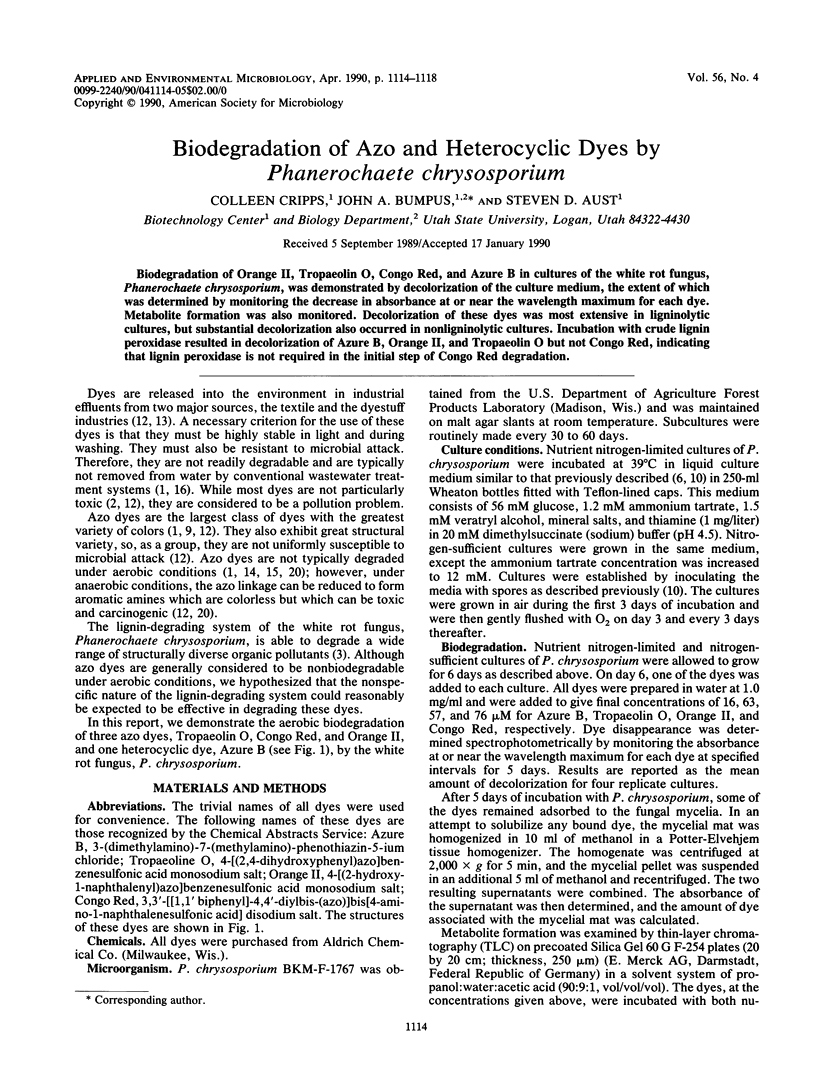
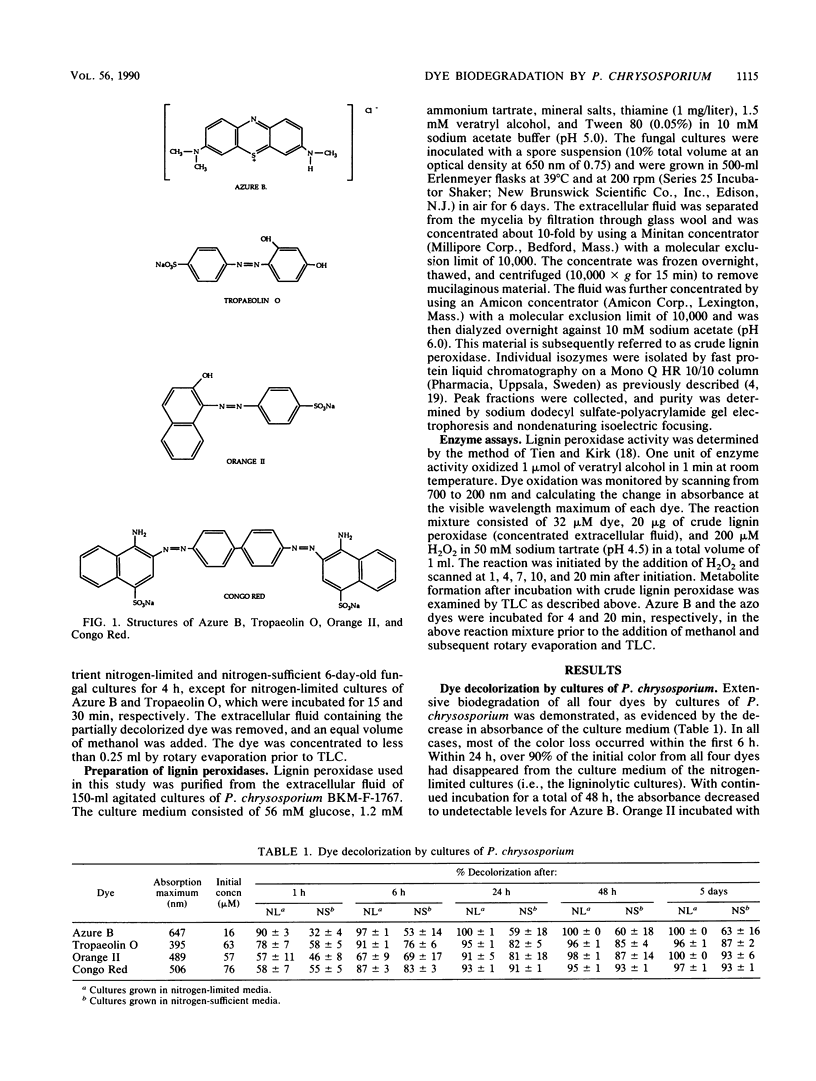
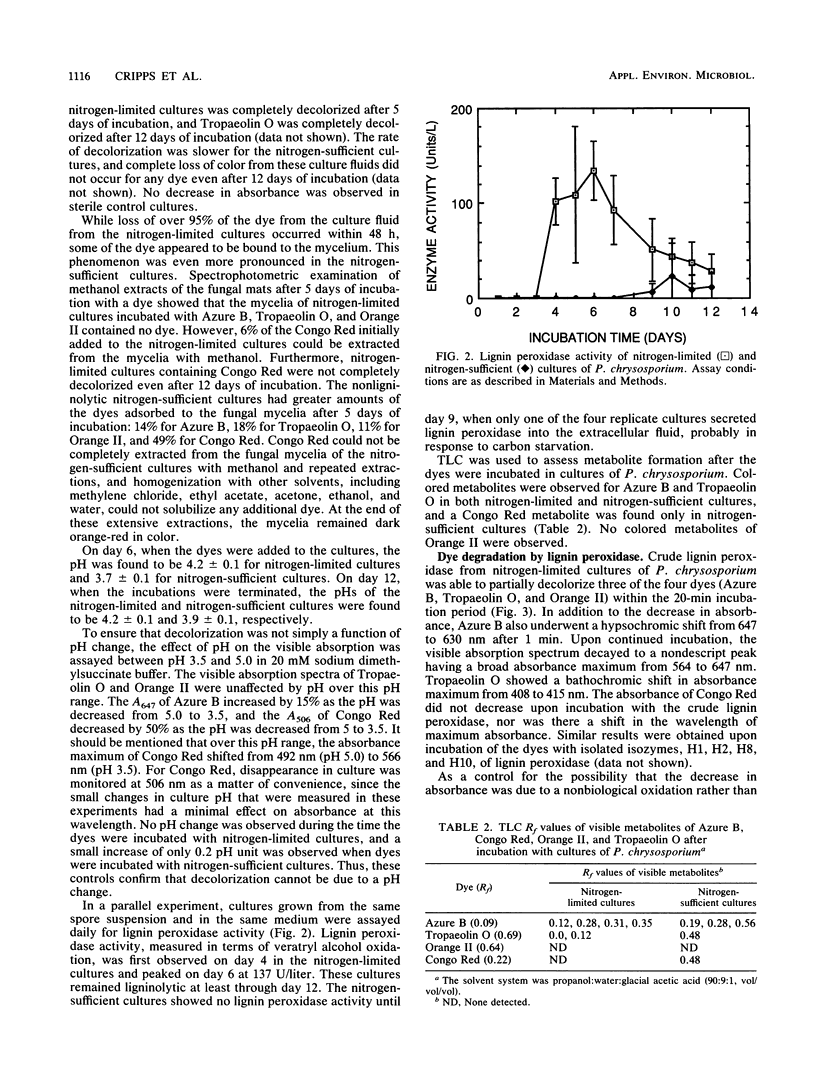
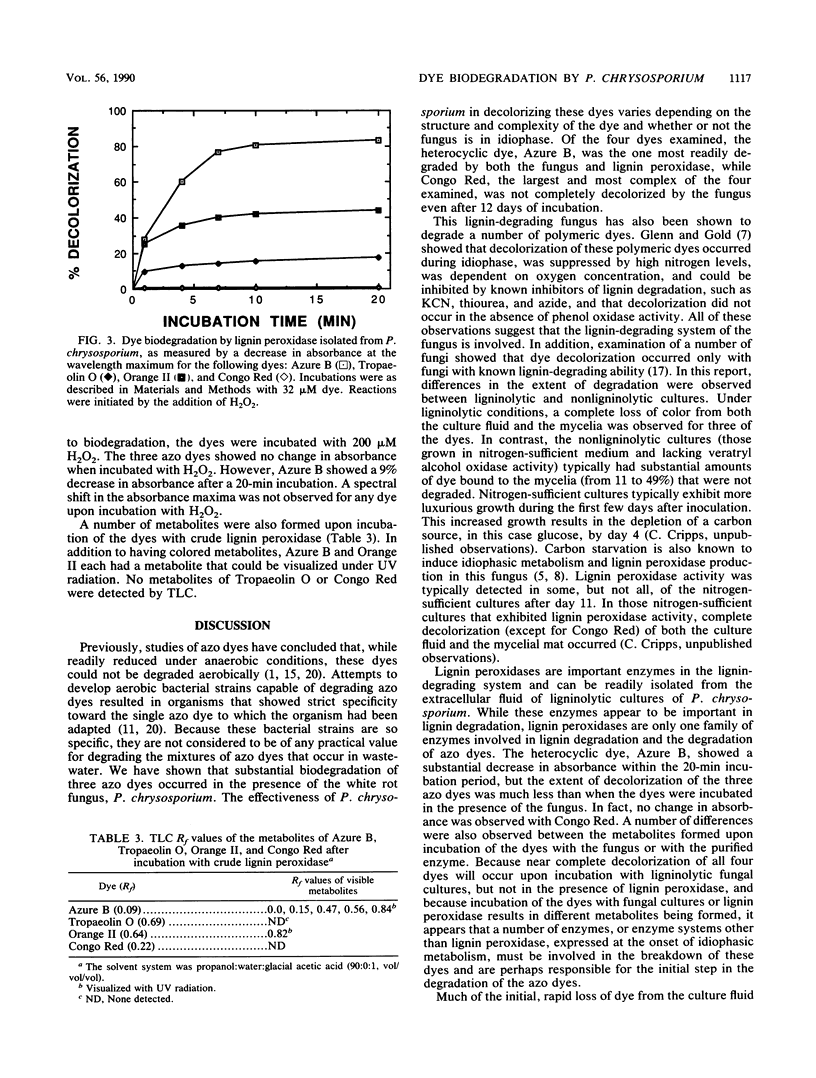
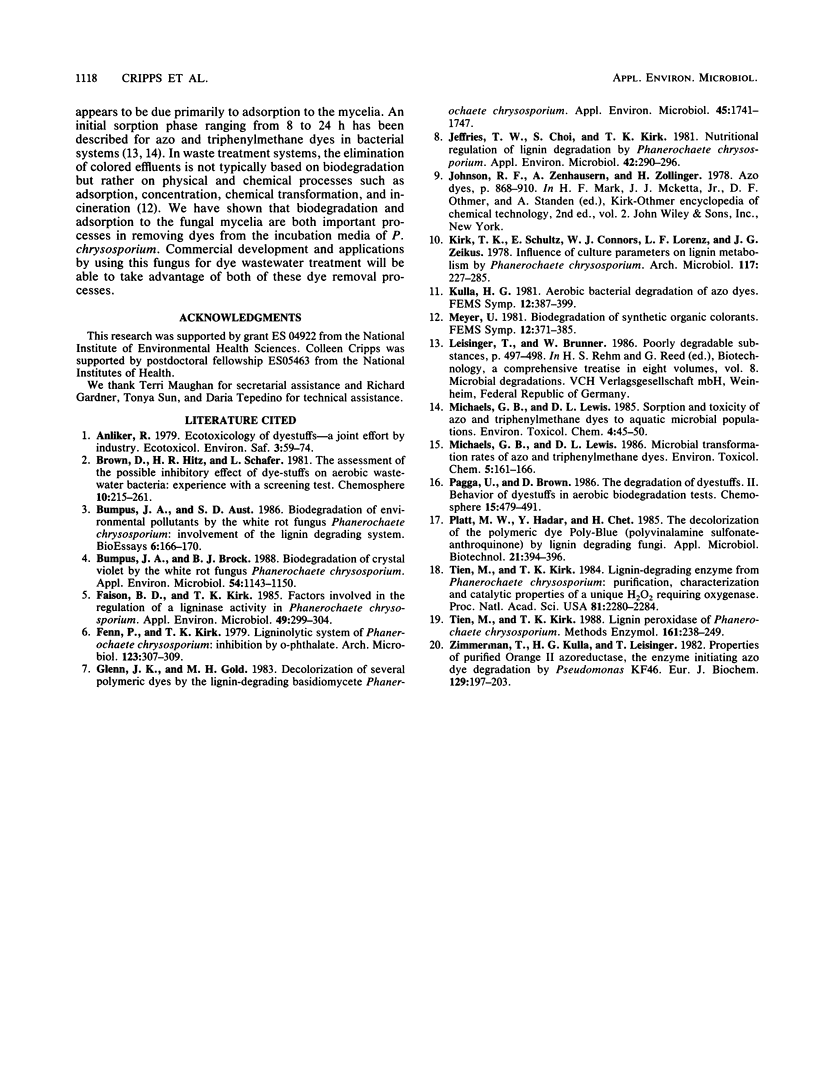
Selected References
These references are in PubMed. This may not be the complete list of references from this article.
- Anliker R. Ecotoxicology of dyestuffs-a joint effort by industry. Ecotoxicol Environ Saf. 1979 Mar;3(1):59–74. doi: 10.1016/0147-6513(79)90060-5. [DOI] [PubMed] [Google Scholar]
- Bumpus J. A., Brock B. J. Biodegradation of crystal violet by the white rot fungus Phanerochaete chrysosporium. Appl Environ Microbiol. 1988 May;54(5):1143–1150. doi: 10.1128/aem.54.5.1143-1150.1988. [DOI] [PMC free article] [PubMed] [Google Scholar]
- Faison B. D., Kirk T. K. Factors Involved in the Regulation of a Ligninase Activity in Phanerochaete chrysosporium. Appl Environ Microbiol. 1985 Feb;49(2):299–304. doi: 10.1128/aem.49.2.299-304.1985. [DOI] [PMC free article] [PubMed] [Google Scholar]
- Glenn J. K., Gold M. H. Decolorization of Several Polymeric Dyes by the Lignin-Degrading Basidiomycete Phanerochaete chrysosporium. Appl Environ Microbiol. 1983 Jun;45(6):1741–1747. doi: 10.1128/aem.45.6.1741-1747.1983. [DOI] [PMC free article] [PubMed] [Google Scholar]
- Jeffries T. W., Choi S., Kirk T. K. Nutritional Regulation of Lignin Degradation by Phanerochaete chrysosporium. Appl Environ Microbiol. 1981 Aug;42(2):290–296. doi: 10.1128/aem.42.2.290-296.1981. [DOI] [PMC free article] [PubMed] [Google Scholar]
- Lewis B. How to develop and use a patient questionnaire. Physicians Manage. 1986 Feb;26(2):161-6, 171, 174. [PubMed] [Google Scholar]
- Tien M., Kirk T. K. Lignin-degrading enzyme from Phanerochaete chrysosporium: Purification, characterization, and catalytic properties of a unique H(2)O(2)-requiring oxygenase. Proc Natl Acad Sci U S A. 1984 Apr;81(8):2280–2284. doi: 10.1073/pnas.81.8.2280. [DOI] [PMC free article] [PubMed] [Google Scholar]
- Zemper E. D., Black S. H. Morphology of freeze-etched Treponema refringens (Nichols). Arch Microbiol. 1978 Jun 26;117(3):227–238. doi: 10.1007/BF00738540. [DOI] [PubMed] [Google Scholar]
- Zimmermann T., Kulla H. G., Leisinger T. Properties of purified Orange II azoreductase, the enzyme initiating azo dye degradation by Pseudomonas KF46. Eur J Biochem. 1982 Dec;129(1):197–203. doi: 10.1111/j.1432-1033.1982.tb07040.x. [DOI] [PubMed] [Google Scholar]


